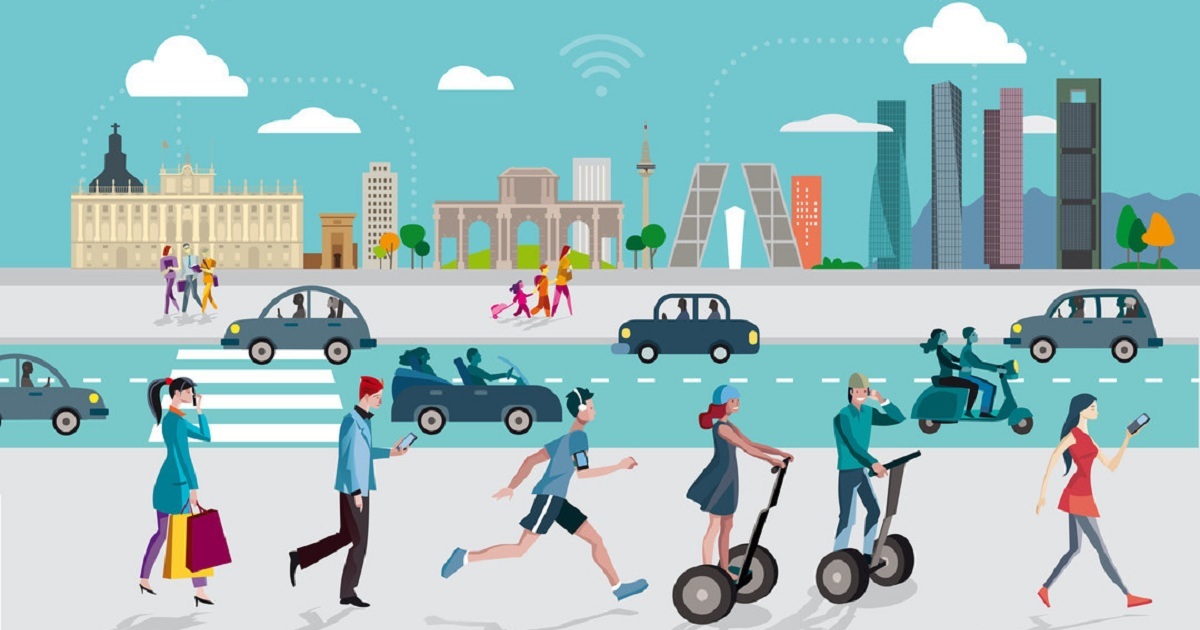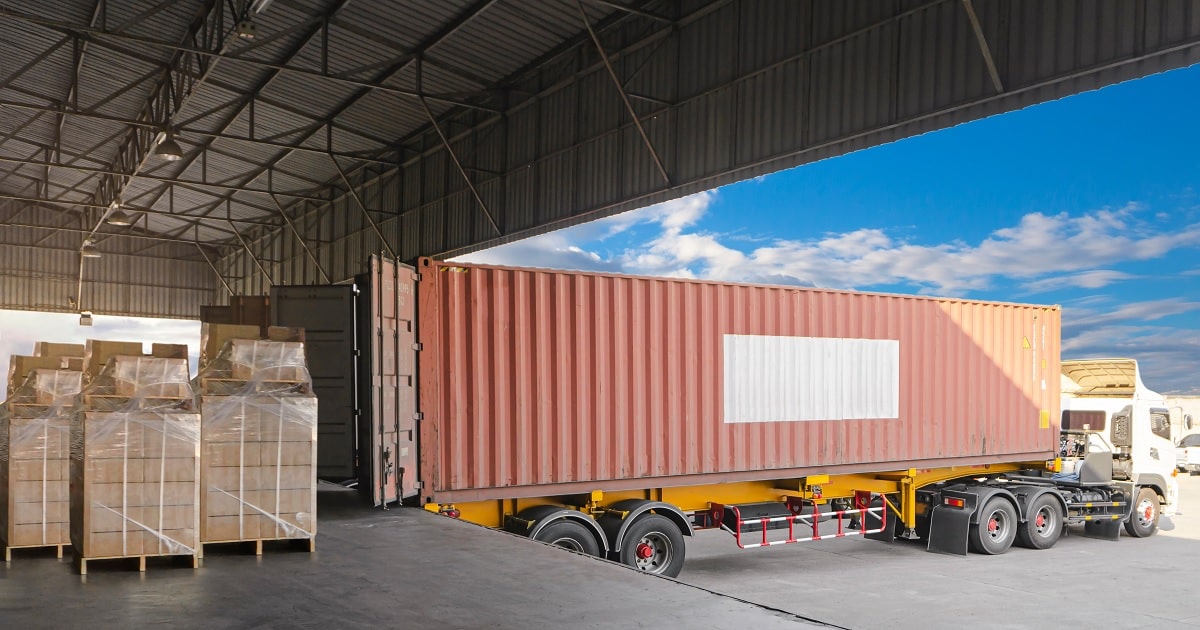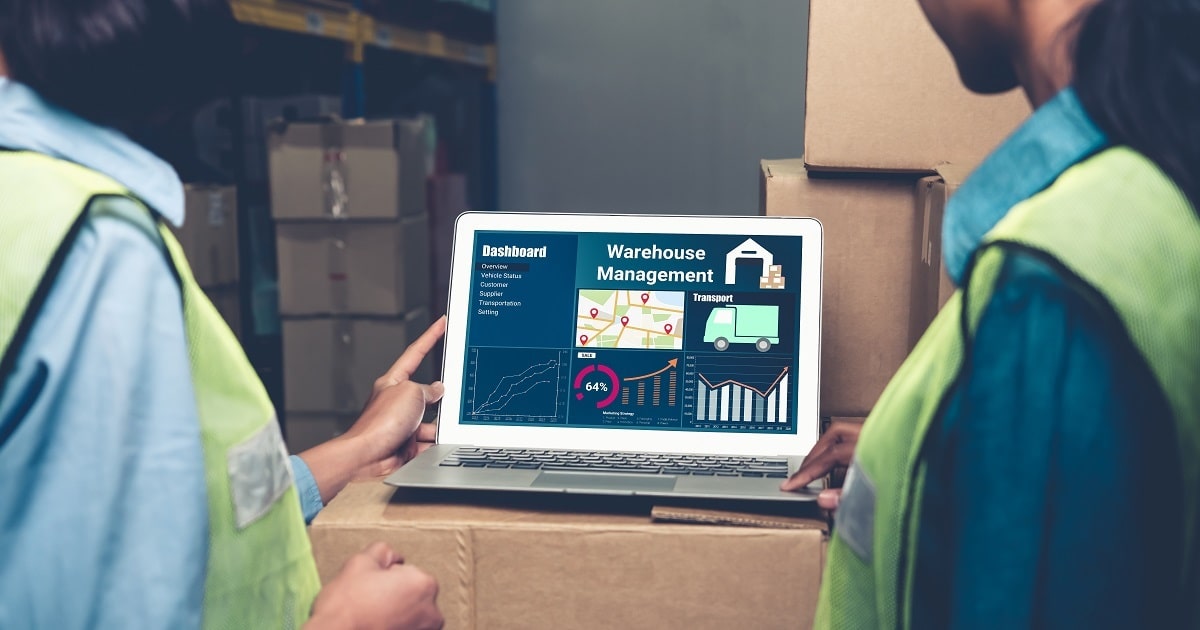
Warehousing and Distribution
Article | June 16, 2023
A sector which has been heavily disrupted in the last years is the mobility sector. Following decades of "car being king", we have reached a saturation and mentality shift. People want to be more healthy and more ecological (sustainable) and also avoid losing precious time in traffic jams. As a result a whole eco-system of companies has been created to find solutions for this.
This article tries to provide an overview of the trends in this market, with a focus on the Belgian market.
First of all when looking at mobility and the offers on the market it is important to make a distinction between private and professional displacements. This last category can additionally be split up between the daily commute and professional displacements during working hours.
When looking at private mobility (the so-called B2C market), the car remains an important pilar. Especially for families with (young) children it remains difficult to do everything without a car. Obviously, there is a trend to be more sustainable, which is reflected in more sales of hybrid and electric vehicles, more usage of (e)bikes and (e)steps and an increasing usage of shared mobility options (like shared bikes, steps or cars).
Statistics from China, which is already the furthest in the post-Covid era, show that most mobility options have lost terrain (compared to pre-Covid), with the exception of the car and bike. The car, although still not very sustainable, is still the most flexible and has the least chance for contamination. Especially the flexibility will become more important as office hours also become more flexible. Additionally due to the increased home working, in some cities traffic jams have considerably reduced, making room again for more people to switch back from public transport to their car.
Additionally there is the bike. This is a very flexible, individual, healthy and sustainable mode of transportation that many have discovered during the crisis. Furthermore with ebikes becoming more and more common, bigger distances can be covered without needing to be in excellent physical shape.
The professional mobility (i.e. B2B(2C) market) is however even more in evolution, as governments provide all kinds of fiscal incentives to change the mobility habits of employees and employers. Furthermore employers want to offer more flexibility (in working hours, in working location and in mobility options) and less administrative burden to their employees, allow them to profit from those fiscal incentives (resulting in an increased buying power) and become more sustainable.
As a result a variety of new offers to be more flexible and optimally profit of those extra-legal advantages has come to the market. This makes it very complex for an employer to find his way in this tangle.
Obviously, every company is unique, with multiple axes determining which mobility options are possible and best suited for the company:
The location of the company, i.e. Is the company situated in a city with a lot of mobility difficulties (traffic jams)? Is the company situated near public transport options? Is the company situated in a city where a lot of shared mobility options are available? Are the employees typically living close or far away from the company? Which kind of parking facilities does the company have? Does the company have multiple offices geographically spread over the country?
The type of work done at the company, i.e. Does the work require physical presence at a specific location (i.e. time- and location-dependent work)? Is remote work possible? Does the work require a lot of displacements to customers (and/or partners, suppliers…) during working hours?
The type of employees working at the firm, i.e. Are the employees typically living close or far away from the company? What is the age distribution of the employees within the company (e.g. lot of young people, lot of employees with children…)? How strong is the war for talent for the desired employees, forcing the employer to offer a lot of extra advantages to attract people?
The size of the company, i.e. a bigger company has the means to setup more complex mobility plans/options, as they often have dedicated people within HR specialized in these setups.
This makes it difficult to define a "one-solution-that-fits-all" approach, but rather a more tailored approach is required, with some degree of customization per customer.
Some examples:
Promoting commuting by bike via bike leasing and a bike allowance is mainly interesting for companies with employees not living too far away from the company and not requiring doing customer or other professional displacements during working hours. Additionally it depends on the profile of the employees and the safety of the trajectory between the home of the employees and the office. Note that 54% of Belgian employees does not want to use a bike to come to work, with the main reason people finding it too dangerous. At the other hand a similar percentage of employees indicates they would be very interested in options like bike leasing and bike allowances.
Shared mobility options are of course only interesting in the bigger cities, where those options are also strongly available. As a result incorporating those options in a mobility plan does not make much sense when the employer is situated in a location where those options are (almost) not available.
The same applies for "multi-modal transportation" (and the associated multi-modal route planners), which are also only interesting in the larger cities where multiple mobility options are readily available. Furthermore a company introducing this multi-modal mobility concept should be able to put a whole change management trajectory in place, as it requires discovering new mobility options and changing existing commute habits (for most employees the commute is a routine activity, which they do in "auto-pilot")
Setting up a Cafeteria plan or Mobility budget can be quite complex, making the costs and effort, especially for smaller firms, not always outweigh the benefits. New digital solutions can provide a (partial) solution to this, but they typically do not take away the uncertainties for employers to deal with something they do not fully understand.
Electric cars are still difficult for people doing large distances on a regular basis, due to their limited action radius and the too low number of charging stations (especially in the South of Belgium). On the other hand for companies where employees come to the office the whole day and that have the required space to setup charging stations, this can be a very interesting option both fiscally and ecologically.
Collective organized transport is typically only economically viable for large companies, for which a large number of employees are coming from the same region. Platforms exist to manage this cross-employers, but this raises a number of other concerns and reduces the added-value.
Options like "no-mobility" (i.e. home working) and "less-mobility" (flex-offices / co-working places) depend on the work culture and the type of work to be done. For some companies the shift to homeworking during the Covid-confinements was already a serious stretch, which will take years to get fully absorbed. Introducing new concepts like "flex-offices" (co-working places) is probably a bridge too far, especially as there is still a lot of unclarity of who will be paying (and what the fiscal implications are) for the office space (employee paying out of his mobility budget or employer paying) and even more for the added-services like drinks, snacks, catering…
…
In general employers have a big interest to do something around mobility, but when having to deal with all complexity (fiscal and operational concerns like policies, load administration…), many employers drop out. Employers fear especially all exceptions, as they often represent hidden costs and lot of extra effort. E.g. what happens if an employee leaves the company? What if someone is fired? What about the liability in case of accidents/theft/vandalism? What will be the exact total cost for me as an employer? How do I need to manage VAT? What is the exact value of benefit of all kind for the employee? Which proofs do I need to collect for the tax authorities? Does it fit with the agreements made in the collective labor agreement of the joint committee?…
These questions mainly originate from the existing unclarities in the fiscal regime, which is due to the fact that many HR managers are not yet acquainted with these new offers, the fact that new mobility offers are created continuously (making it impossible for the government to stay up-to-date) and the continuous change in regulation (e.g. "Mobility Budget", "Company Car Legislation"…).
This lack of maturity in the industry puts a break on the adoption and this maturation might take years to unfold. E.g. meal vouchers took 40 years to arrive to a market penetration of 50%, while this is a much simpler HR product than most mobility options. Until this maturity level is reached, resulting in more well-known, better integrated, more frictionless and cheaper offers, the traditional company mobility options of reimbursing public transport subscriptions and salary cars will remain mostly used. Those are still most widely known by HR managers, are fiscally still very interesting and fit well the needs and desires of most employees.
This last argument is important, as no mobility option will become mainstream unless employees are happy with it. This means the mobility option should not only give a solution for "Professional displacements" but also for the "Private displacements" (in evenings, weekend, holidays…), often with the whole family.
Nonetheless we see the market is maturing and transforming, as millions of euros of VC money are invested in promising new start-ups. Almost all of those start-ups are not profitable yet but given the market potential a few of them could grow out to become unicorns. Today’s students are more acquainted and open for these new mobility services, so likely some of them will become mainstream in the next decade.
Today a whole eco-system of young start-ups and existing incumbent players are offering mobility services, like
Car leasing companies: Alphabet, ALD Automotive, ING Lease, KBC Autolease, LeasePlan, ARVAL…
Car rental companies: Sixt, Avis, Dockx, Hertz, Rent a car…
Car sharing companies (in the form of cars that can be easily used for individual trips up to platforms facilitating sharing your private car or co-driving): Cambio, Poppy, Partago, Zipcar, Cozywheels, Getaround, Dégage, Share Now, Stapp.in, Tapazz, BlaBlaCar, Klaxit, TooGethr, Carpool (Mpact)…
Taxi services: Uber, Wave-a-Cab, Taxi.eu, Heetch, Bolt, Free Now, Allocab…
Bike leasing companies: Ctec, O2O, Joulebikes, KBC-Fietsleasing, B2Bike, Cyclis, Lease-a-bike, Cyclobility, Cycle Valley…
(e)bike, (e)step and scooter sharing & renting: Lime, Dott, Bird, Felyx, Scooty, Villo!, Billy Bike, Mobit, Blue Bike, Swapfiets, Spinlister…
Fuel card and Electric charging card issuing companies: Network Fuel Card, Modalizy, Fleetpass, Belgian Fuel Card (BFC), XXImo, EDI (Electric by D’Ieteren), New Motion, Plugsurfing, Blue Corner, Luminus, EVBOX, Cenergy, Eneco, Dats24, EV-Point,…
Parking companies (either companies providing public parkings or platforms to share individual and company parkings): Yellowbrick, Indigo, QPark, BeMobile, BePark, Pasha, ParkOffice…
Companies helping to define mobility plan and manage setup of policies and mobility plans/budgets: Social Secretariats (SD Worx, Partena, Securex, Acerta, Liantis…), Payflip, Mbrella, MaestroMobile (Espaces-Mobilités)…
MaaS (Mobility as a Service) players: Modalizy, Skipr, Optimile, Olympus, Be-Mobile, MyMove, Vaigo (Eurides), Moveasy…
(Inter-modal) Route planners: Google Maps, Coyote, Waze, Mappy, Jeasy, Skipr, Stoomlink…
Co-working place companies (either companies providing co-working places or platforms allowing to reserve spaces over multiple co-working places): Bar d’Office, Workero, Cowallonia, Burogest, Regus, Welkin, Meraki, Frame 21, Fosbury & Sons, Start it, Coffice, Spaces, House of Innovation, Ampla House, WeWork, Betacowork, Startbloc, SilverSquare…
Expense management solutions for local and international (mobility) expenses: Rydoo, XXImo, MobileXpense, N2F, Certify, SAP Concur, Travel Perk, Trippeo, SpenDesk, Splendid, Declaree, SRXP, Dicom, WebExpenses, Notilus, Expensify, ExpensePath, Abacus, ExpensePoint…
It will be interesting to see which of those companies will still be around in 10 years (i.e. which of the start-up have sufficient funding to bridge the long-time gap to profitability) and to which form they have evolved. Clearly regular pivoting will be required as this market is in full evolution.
Read More

Transportation
Article | April 26, 2023
The pandemic has had a significant impact on the logistics and shipping sectors, forcing businesses to rethink their supply chain tactics. Fresh COVID- Supply systems around the world are already under threat from 19 outbreaks. China's measures to stop the spread of Omicron by shutting down shipping terminals caused a lockjam of cargo ships. A similar scenario was seen in US and European ports that were congested as a result of a significant increase in cargo.
Additionally, these difficulties have been made worse by the tremendous staff shortage in the US. Although there are more job openings than before, the total strength of the workforce has taken a hit. A report by WNS and Corinium Intelligence reveals that over 60% of shipping and logistics organizations have amped up the automation aspect of their operations by two years. So, what does that mean for the future? In this article, we will talk about the four most promising trends that will define the shipping and logistics industry in 2025.
Live Monitoring Powered by Big Data and the Digital Twin Technologies
Big data is simplifying the ability to be agile, efficient, and cost-effective, and connectivity with other technologies and elements of the infrastructure is driving a real-time view of the supply chain further. Other innovations such as drones and self-driving trucks will contribute to this real-time update and processing of massive amounts of data. In addition, tracking software for freight will provide even greater visibility to customers and enterprises.
Automated Planning Through Collaboration Between Humans and Machines
Artificial intelligence (AI)AI in shipping and logistics has grown exponentially in areas of planning. AI applications are used to alter transportation and route planning. According to Gartner, by 2030, AI augmentation, will surpass other forms of AI application and account for 44% of all AI-powered value. Predictive alerting is a prominent example of augmented intelligence. Smart alerts based on predictive analytics can be used by logistics professionals to carry out a variety of crucial tasks, such as estimating truck arrival times, anticipating equipment maintenance and product damage, and organizing for a spike in demand.
Hyper-local Supply Chains
Enterprise will downsize and bring their supply chains onshore over the course of the next few years, ushering in the next generation of hyper-local logistics. The two forces driving this transition are the need to stay agile and resilient to counter disruption and meet challenging customer demands for same-day delivery. The global same-day delivery market is estimated to reach a value of USD 20.36 billion by the year 2027. This will cultivate a hyper-local service to meet the growing demand.
Sustainability
An emphasis on sustainability will be the highlight of the shipping and logistics industry. Enhanced connectivity will enable enterprises to optimize their human as well as robotic resources.
Future Forward
The shipping and logistics industry has been forced to accelerate their digital adoption and increase their resilience due to the uncertainty in the past couple of years. Establishing real-time visibility, leveraging human-machine collaboration, adopting hyper-local logistics, and improving sustainability are all ways that businesses are preparing for the future.
Read More

Supply Chain
Article | August 17, 2023
In the past couple of years, supply chain management has witnessed massive disruption. The implications of the pandemic have put pressure on manufacturers to revisit and reimagine how they manage their supply chains. This is why ERP software is so mission critical in supply chain management. It not only helps supply chain chiefs reduce overhead costs but also enhance efficiencies and timely deliveries.Here are a few ways ERP plays a role in supply chain management to keep it moving.
Complete Visibility
Having a 360-degree view of the supply chain is integral to making the right decisions regarding procurement and purchase of materials and inventory. It also allows suppliers to have complete control and course correct when necessary. The insight into the complete supply cycle allows suppliers to respond to customer queries better.
Inventory Tracking
ERPs are truly a one stop shop for manufacturers. They feature extensive inventory tracking on one system so manufacturers are in the loop about inventory control and can better optimize their inventory and resources. For manufacturers it is crucial to know where their inventory is, what has been shipped, what is on hand at all times. With ERPs, it becomes cheaper to keep a stock of the inventory and place orders when it’s running low.
Vendor Performance
Vendor performance is an essential aspect of supply chain management. Being able to compare vendors, measure certain quality and quantity metrics and identify bottle necks help suppliers choose the right vendor as well as gives purchasing departments the power to negotiate for better pricing by consolidating purchase. ERPs allow suppliers to do all the above and more.
Procurement
Procurement of goods can be a complex process if done without the right tools. It also impacts the whole supply chain so it is doubly imperative to ensure the procuring and supply of goods is on time. This is especially true in an environment of custom manufacturing. Add to that the requirement of procuring products with lengthy lead times, manufacturers need to take into considerations product that need to be ordered long before they are even designed. ERPs allow manufacturers to keep all departments including engineering and warehousing to work in sync and plan to procure goods on time.
Real-time Reports
Reporting is labor intensive and can be inefficient when it comes to gathering and processing data. With ERPs, manufacturers can generate reports in real-time and all manual data collection processes are replaced with automation, saving time and money in viewing the insights into the movement of products in the supply chain. It enables manufacturers to get a better understanding and make timely decisions that improve the overall efficiency of the supply chain.
To Conclude
ERP systems offer endless opportunities for manufacturers to improve their processes, save time and resources and optimize and enhance inventory planning. With the right tools, it is possible to establish supply chain management that outperforms and is resilient even in disruptive times.
Read More

Supply Chain
Article | March 22, 2022
Warehouse Management System
In Supply Chain, warehouse management acts as the bridge between the supplier and customer. The warehouse facility utilized to consolidate or accumulate products and reduce the transportation cost to achieve economy. Warehouse Management System (WMS) refers to the movement and storage of materials within a warehouse. WMS is part of the Supply Chain Management and concerned with the receipt, shipping and picking of materials.
To effectively monitor the flow of products, WMS utilizes technology devices such as Barcode scanners, Bio-Metrics, and RFID to name a few. A seamless link created between the warehouse facility, order processing and logistics management till shipment. Warehouse management just not limited to the warehouse; it can also a component of Supply Chain Management (SCM) and, when done well, provides a competitive advantage to the business or organization.Supply Chain Management is the management of flow of goods and services including raw materials, work-in-process inventory and finished goods. The markets these days are transcending borders and managing the demand-supply quotient is increasingly getting complex. Production centers are setup at locations where the raw materials and labour are cheaper. Raw materials sourcing and finish goods distribution are done globally.
Supply Chain Management
Thus Supply Chain Management refers to all business processes and activities involved from the procurement of raw materials to the manufacturing and distribution of finished products. SCM in short is the art of providing the right product at the right time, place and cost. As inferred, SCM gets much wider in scope than WMS. However, WMS is perhaps the last mile in the Supply Chain Management system and any hitch in the efficacy of WMS system hampers SCM too.
Conclusion
The primary aim of Supply Chain Management is to match supply with demand. For this to work, the supply chain should be free from bottlenecks such as errant supplies, difficulty in sourcing etc. There seemed significant confusion about the phrases SCM and WMS until recently, and both frequently used interchangeably. However, it been generally accepted that warehouse management refers to the logistics of warehouse, storing, stocking, and also movement of goods. The term Supply Chain has a much broader focus involving suppliers, manufacturers and retailers.By providing customer centric operations in warehousing, companies gain competitive advantage. SCM tools help manage the supplies effectively keeping inventory at optimum levels. The efficiency of SCM relies to a large extent upon the efficiency of WMS. The SCM’s primary concern is to find out the best storage levels, which the WMS attempts to address. Therefore, it is seen that the SCM & WMS are only complementary in nature and not competing. Warehouse Management system also complements the Sales Management System by shortening the sales cycle through quick data access and delivery of quality service, every time.
Read More